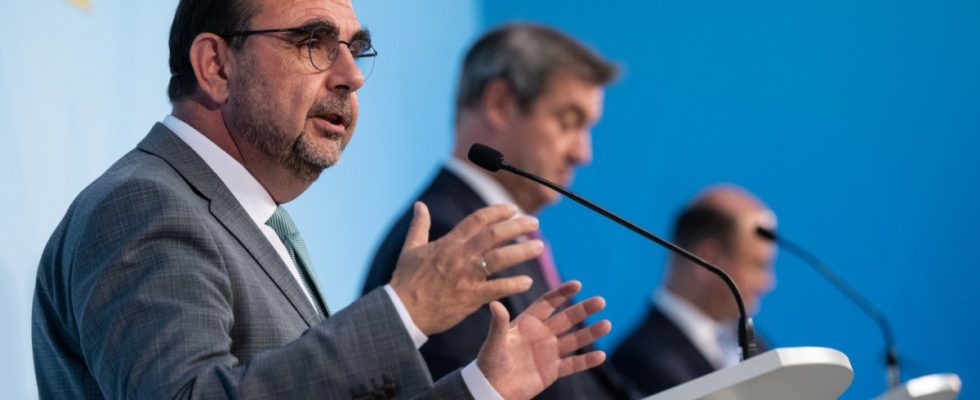The Nuremberg Clinic is getting a new emergency center; They can continue to build at the Traunstein Clinic and renovate at the Sana Clinic in Hof: On Tuesday, the Council of Ministers decided to finance 13 new construction projects for clinics. The Free State is investing a total of 646 million euros in its hospitals this year – exactly the same as last year. But in 2024, Prime Minister Markus Söder promised that they would “up the ante again” at a press conference after the cabinet meeting: From 2024 onwards, one billion euros will flow into Bavaria’s clinics every year.
In addition, the government supports smaller hospitals with 20 million euros annually for five years. And a 100 million euro Bavarian hardship fund is available for everyone who got into trouble as a result of the skyrocketing costs. That is a clear commitment to Bavaria as a medical location, Söder praised his own government work. But the announcements were also well received by the clinics.
“We are grateful, especially in terms of the children and families affected,” says Matthias Keller, medical director and chief physician at the Children’s Hospital Third Order Passau, which is allowed to invest 12.6 million euros in extensions and new buildings. The managing director of the Bavarian Hospital Society (BKG), Roland Engehausen, who recently warned of a “big wave of bankruptcies” in Bavaria, is positive. The investments this year would be just enough for the planned projects. He expressly praised the increase in the coming year: “The Free State has now delivered for the first time,” says Engehausen. Only: Most clinics are still worried about the next year. However, it is the fault of the federal government and not of Bavaria.
Clinics finance themselves from two sources. The investments in new construction projects and modern equipment, for which the federal states are responsible by law – and thus Bavaria, are only the smaller part. They cover the running costs with income from the treatments. However, the prices for these treatments have not been adjusted to the increased inflation, says Engehausen. The federal government has set up a hardship fund for this year, but it will expire in 2024.
More expensive electricity, higher wages – but the clinics could not raise their prices
The current federal-state talks between the health ministers are therefore even more important for the clinics than Söder’s announcement on Tuesday. Officially, it is about the health care reform planned by Health Minister Karl Lauterbach (SPD). At the same time, the financial needs of the clinics are also being negotiated. The clinics hope that the countries will put pressure on them to be able to charge higher prices for 2024. Because not only heating, electricity and bandages have become more expensive due to inflation. Doctors and nurses were also able to push through significantly higher wages in collective bargaining.
According to Engehausen, the costs for the reorganization of the hospital landscape planned by Lauterbach are also not covered. Accordingly, complicated interventions should be centered in the future, especially in the large houses. The small clinics would be responsible for the daily care of the local population. A transformation budget of 50 billion euros is being discussed at federal level for this purpose.
Bavaria’s Minister of Health Klaus Holetschek called the planned investments a “massive premium”. That is a very clear signal, of course also in the direction of Berlin. “We are doing something, doing more than others, putting ourselves at the forefront of countries,” he said. Overall, the cabinet approved 13 construction projects on Tuesday. These included the Traunstein Clinic, which can continue its overall expansion for 57.13 million euros, the southern branch of the Nuremberg Clinic, where a new emergency center is being built for 252.56 million euros, and the König-Ludwig-Haus Würzburg Clinic, which will open for 24 .73 million euros to restructure their orthopedics. According to the Ministry of Health, more than half of the investments flow into construction projects in rural areas.

